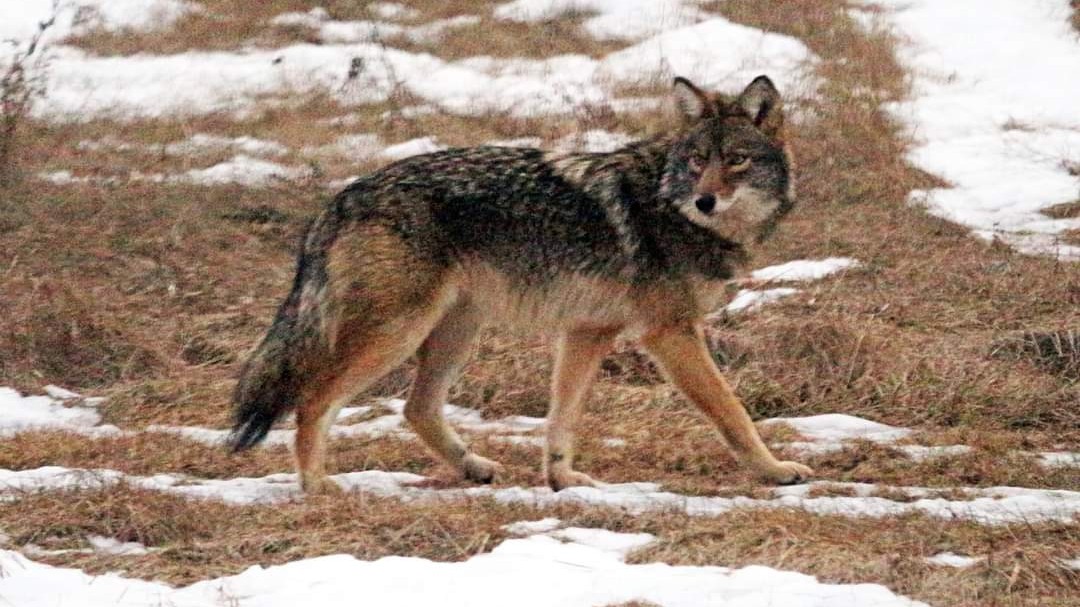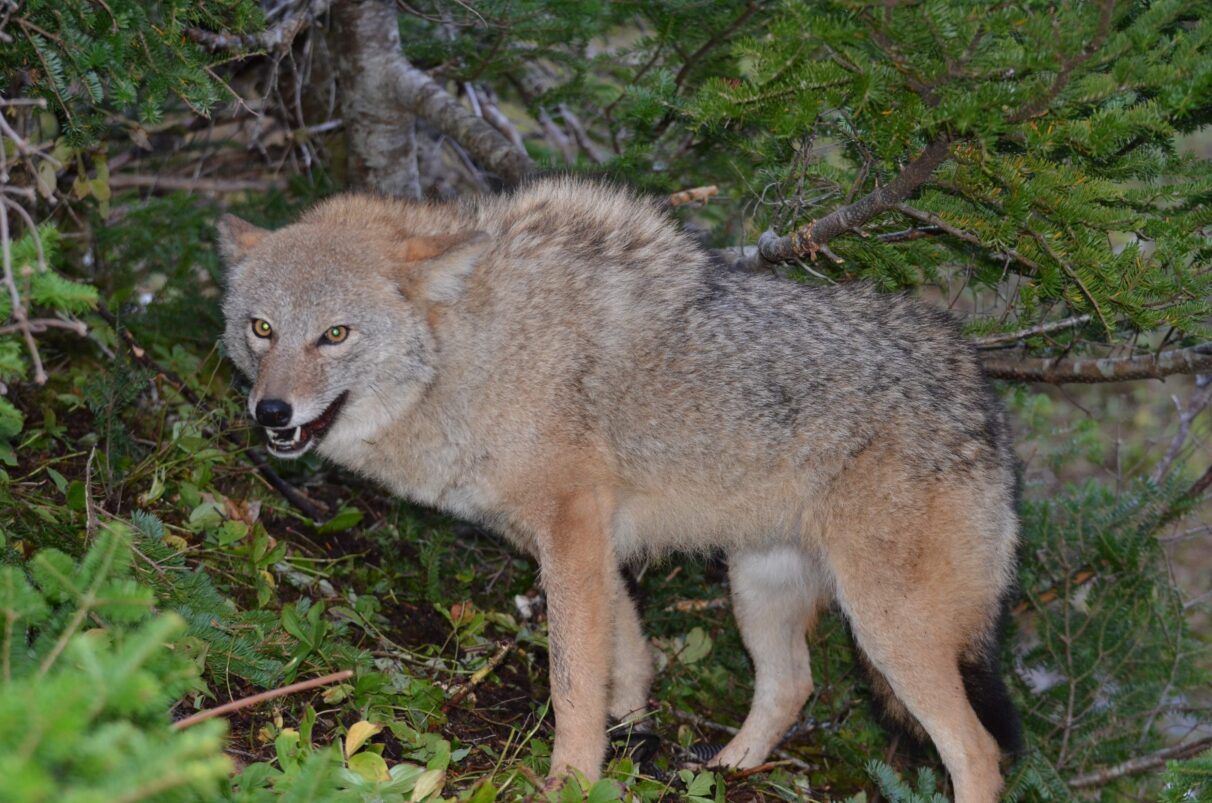Coyote reports down despite recent aggression
Last year N.S. had the fewest sightings in 15 years

caption
A wolf/coyote crossbreed walks along a snowy field about 50 feet from a house in Kingston, Nova Scotia, in February 2022.Despite recent incidents in Nova Scotia involving aggressive coyotes, officials say actual sightings of the animals are down this year.
In September, a cyclist was chased by an aggressive coyote on the Cabot Trail in Cape Breton. The cyclist tried to fend off the coyote but was attacked and taken to hospital. Last month the Department of Natural Resources and Renewables (DNR) received multiple reports of aggressive coyotes along the Bay to Bay Trail in Mahone Bay. In both of these cases, DNR trapped and euthanized the animals.
DNR’s director of wildlife, Andrew Boyne, said his department has only received 191 calls regarding coyote sightings so far this year in Nova Scotia. Of the 191 calls, only seven were deemed aggressive.
Both aggressive encounters and general sightings have been declining since a peak of about 413 reports in 2017. Last year Nova Scotia had the fewest reported sightings in 15 years, at 186 reports, said Boyne.

caption
A coyote raises its hackles under a fir tree.According to several news stories in the spring of 2021, the Nature Conservancy of Canada said coyote sightings, among other wildlife, were on the rise in Nova Scotia partly because of COVID-19.
“Over COVID, people were getting out more, getting out into nature and trails and conservation areas. There was a lot more of that kind of activity. So more people and more eyes out there, seeing what’s on the landscape,” said Doug Van Hemessen, the stewardship manager for Nature Conservancy of Canada, for Nova Scotia.
But that doesn’t appear to be the case anymore in the province.
“There is a sense that coyote reports have been going up, but in fact, some people may be reporting coyote sightings through social media and thinking that’s how they’re doing it and our numbers are based entirely on people who have called the department to report coyote sightings,” said Boyne.
Chelsie Everett posted her encounter with a coyote to Facebook this summer.
In late August around 11:30 p.m. one evening, Everett was in her car when she saw a coyote wandering the front lawn of Victoria Apartments in Digby.
“It was scary because it’s across from the playground and I have a three year old, so just knowing that I live really close to where they are is kind of scary,” says Everett.
She posted a video of the coyote to a community Facebook page called Digby Talks. Similar posts about coyote sightings in the town have been all over the page.
“When I see somebody posting [coyote updates], I definitely try to be aware of when I’m taking my daughter outside,” says Everett.
Three of the seven aggressive coyote reports were instances of coyotes being aggressive toward dogs that weren’t on a leash. “If you’re worried about coyotes or bears for that matter, keeping your dog on leashes is really quite key,” says Boyne.
Where are the coyotes?
Although Boyne doesn’t know the coyote population in the province, he says it’s stable.
The highest coyote reports are in Halifax Regional Municipality with 34 reports this year. Cape Breton Regional Municipality has 31, Kings County has 19, Antigonish has 13, Pictou has 17, and all other counties in the province have seen fewer than 10 coyotes so far.
“If you see a coyote in Halifax you’re probably more likely to call than if you see a coyote in a rural area where people may be more used to them,” says Boyne.
He says as the population of Nova Scotia becomes more urbanized there becomes more opportunities for humans to interact with coyotes.
“There’s a lot of food available, that’s kind of easy pickings, compared to, you know, being out in the wild,” says Van Hemessen.
Clearing the garbage off your yards is one of the messages DNR tries to get across.
Another message DNR emphasizes is “B.A.M,” says Boyne.
- B “Back away. Don’t turn your back on an animal if it’s approaching you.”
- A “Act big.”
- M “Make noise.”
“Coyote attacks are extraordinarily rare,” says Boyne.
There have only been two deaths from coyotes in North America, says Boyne. A 19-year-old folk singer was attacked and killed in Cape Breton in 2009. A three-year-old girl was killed in California in the mid-80s.
“We live in a province where it’s very difficult to be very far away from human habitation that if you release an animal and relocate it somewhere else it’s likely to continue the same behaviours,” says Boyne. “You move them 100 kilometres and you find them back in the same place.”
Coyotes are territorial. If you relocate the animal in another animal’s territory it causes stress and conflict between the residents and the relocated animal, says Boyne.
“Our number one priority is human safety, but we try and balance that with animal welfare.”
About the author
Molly MacNaughton
Molly is originally from Digby, N.S. She's in her fourth year of the BJH program. She once covered a story about a murder; a murder of crows...
